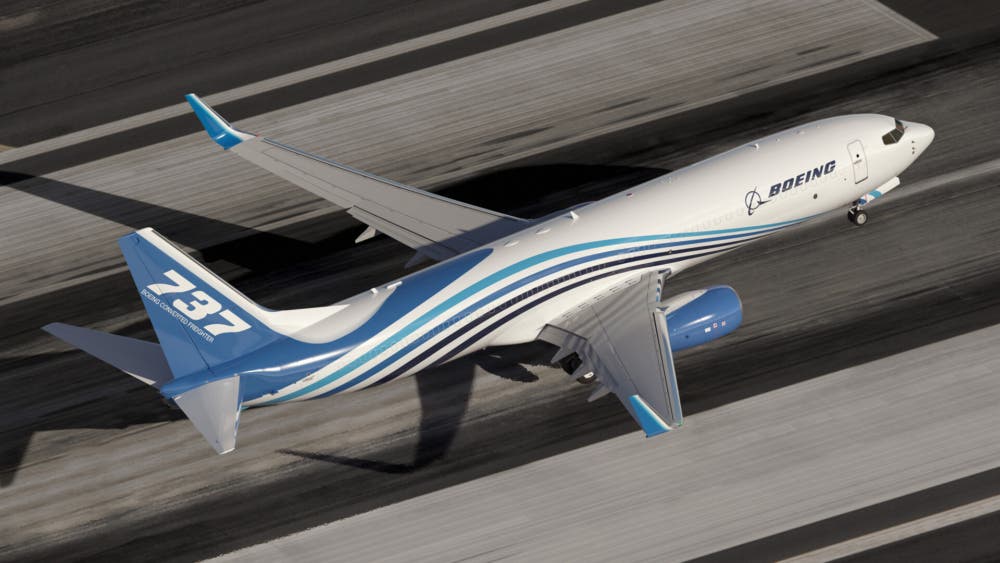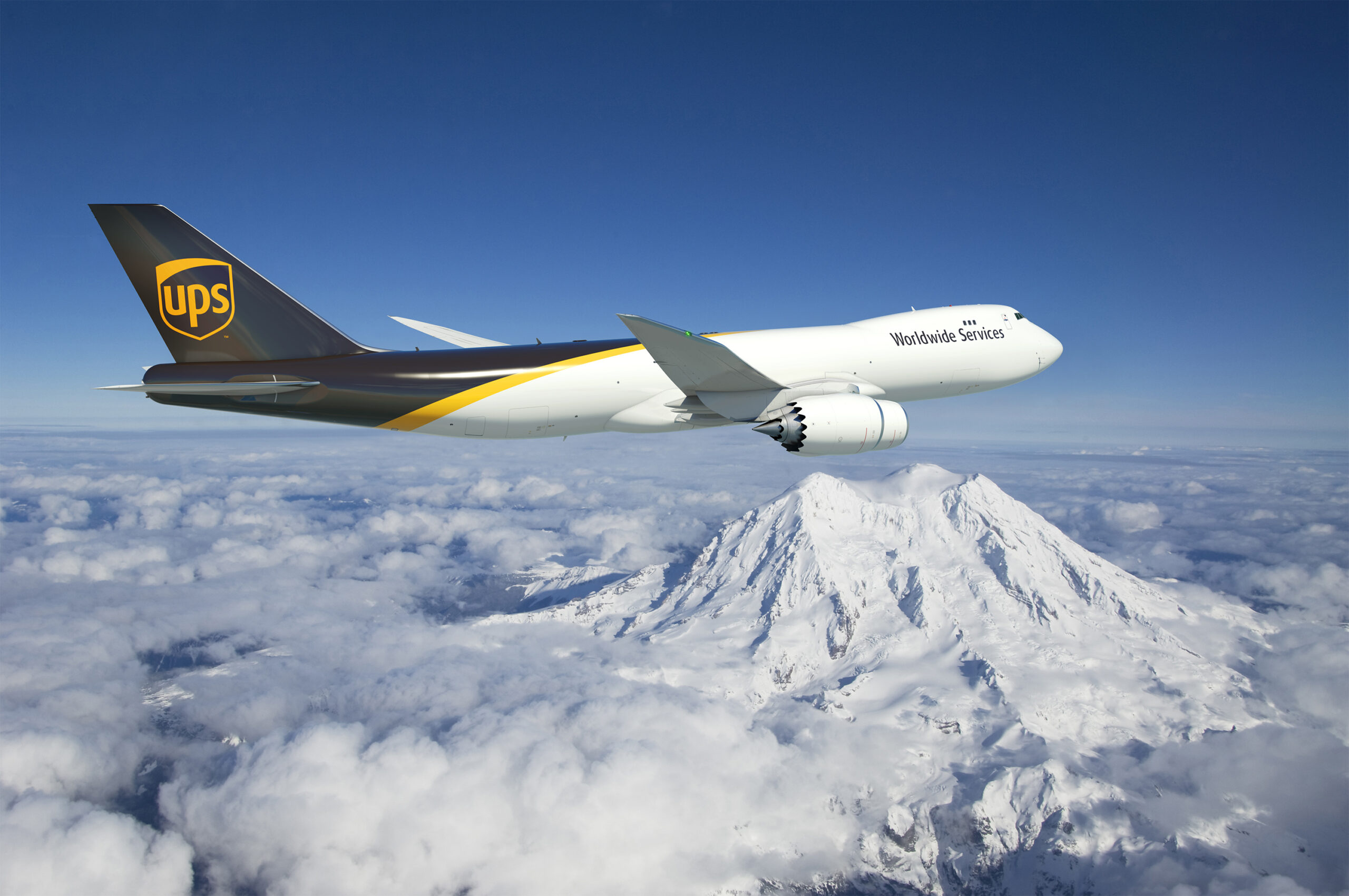Is it too early to say that spring has sprung? The birds are singing, the sunny days are getting longer and more frequent, and we can actually go outside to enjoy them, unlike this time last year. I hope I’m not jinxing it when I say that this year’s spring may be the most ‘normal’ season for the last two years. The ‘new normal’ is rapidly fading faster than fidget spinners did, as Covid slowly retreats into the realm of ‘yearly nuisance’ viruses like the common cold. With its departure, the world is slowly waking up to the new spring. Recovering industries are growing like the first bluebells, increased vaccination rates are bringing hope to the global population with the first of spring sunshine; and a newfound sense of optimism seems to be settling over the world. What’s more, certain industries have used post-pandemic recovery like a shot of steroids, growing at a faster rate than they did before Covid blighted this planet. One of those is the global air cargo industry, the subject of this article. I want to explore how industry players have been utilizing this explosive growth in the midst of a pandemic, how the E-commerce boom acted like rocket thrusters to propel this industry forward – and how air cargo is future proofing itself to keep growth at eye-wateringly high levels. I’m not exactly known for keeping these deep dives ‘short and sweet’, so if you’re expecting a quick 5 minute read, you might want to save it for another time. That being said, I hope you’ll come away from reading this knowing that little bit extra about an industry you’re interested in (I assume you’re interested anyway, if you’re browsing through a website meant for aviation enthusiasts!).
The Pandemic, E-commerce, and the Cargo Market

Online shopping has never been this good
The pandemic saw many changes take place around the world as we all adjusted to a ‘new normal’. With people either trapped inside because of lockdowns, or scared to go outside for fear of contracting Covid, some drastic and rapid adaptations had to take place in order for us all to collectively pull through. As you might expect from a population trapped inside during the digital age, people began spending a huge amount of time online. As a result, the digitization of various aspects of society (including my uni course) quickly became our reality. I would like to say that everyone took this opportunity to re-evaluate their consumerist lifestyles, started appreciating their surroundings more, and began to live more in the present – and, to be honest, many did – however, the majority just turned to online shopping to fill that ever present need to consume, and cope with the boredom of, essentially, being under house arrest for the better part of two years. Businesses also increasingly moved online to try and mitigate the massive losses incurred due to the sudden reduction in custom the pandemic brought. As a result, the E-commerce industry suddenly found itself pumped full of the digital equivalent of elephant growth hormones – that is to say, it experienced massive growth.
The industry’s share of global commerce shot up from 14% in 2019 to 17% in 2020, and continues to grow at that same speed well into 2021 and 2022, according to a report by the United Nations Conference on Trade and Development. The group’s Acting Secretary-General, Isabelle Durant, stated that “businesses and consumers that were able to ‘go digital’ have helped mitigate the economic downturn caused by the pandemic.” Essentially, consumer capitalism stopped us from all experiencing worse than 2008 levels of economic depression. Small businesses and developing countries have been able to ride this growth train, utilizing the sudden increase in general E-commerce demand to grow their own corporations and economies. Indonesia, for example, has launched a capacity-building program to expedite digitization among micro, small, and medium enterprises. According to Big Commerce, 67% of consumers shop differently now to how they did pre-Covid, and 20-30% of global business moved online. This, in turn, meant that the global cargo industry was suddenly inundated with an influx of demand for products and goods to be shipped around the world. The growth of omnichannel supply (shipping that utilises multiple transportation methods) also meant that supply lines found themselves having to become fluid and adaptable almost overnight. This, of course, led to problems.
Cargo ports became congested, there was (and still is) a major global shipping container shortage, and the international cargo industry struggled to cope. On top of all that, perishable or urgent equipment like vaccines and PPE needed to get from point A to point B ASAP, otherwise lives could be at stake. Supply could no longer keep up with demand, leading to huge delays at the start of the pandemic on your Amazon deliveries. Demand drives growth however, and international cargo suddenly found itself sitting on a rare growth opportunity. One of the players in the industry adapted to the sudden huge demand the best, arguably; and that was air cargo.
Shipping things by air is usually very expensive, but also very quick – meaning air freight is often reserved for perishables or some of the most expensive items. To give you an idea of this, cargo shipped by air represents 1% of the total freight market volume, but accounts for 35% of its value. That all changed with the pandemic, as corporations increasingly turned to transporting things by air to get round the massive shipping congestion the world found itself suffering from. Keeping customers is worth shelling out a few extra dollars, and in a world dictated by ‘have it now’ culture, having to wait another two weeks for a product would most likely result in no more repeat customers. “We have used a lot of air freight, which we’re not excited about, but it’s a necessary thing with the challenges we’re all being faced with,” explained David Bergman, Chief Financial Officer for Under Armour. To put things in perspective, USA Trade Online, which tracks cargo flows in and out of the USA, found that in the first 10 months of 2021, 78.9 million kg of car parts was sent by air from Asia to the US – a massive increase from the pre-pandemic 3 million kg.
Adding to this is another major factor drastically impacting the way air freight works. You see, more than half of the worlds air cargo is usually shipped in the ’belly holds’ of commercial jets (essentially airlines can ship passengers and parts on the same flight to improve efficiency). However, the pandemic put a stop to that, leaving only dedicated freighter aircraft to take over. This, and the increase in demand, caused the cost of air freight to skyrocket. As a result, airlines suffering heavy losses from the dramatic decrease in passenger numbers (global demand fell by over 70% between November 2019 and November 2020) looked to the cargo market to try and recuperate some of their losses. This caused manufacturers to start pumping out (and converting) dedicated freighters faster than you can blink, but while tapping into this demand did ‘soften the blow’, so to speak, it didn’t reverse the heavy losses suffered by the industry during the pandemic. “In no way has freight cargo reversed the damage that has been done to airports and their operations,” states Stephen Harvey, Head of Cargo at East Midlands Airport; and what’s more – the cargo industry did suffer as well. European air cargo demand fell by over 13% from 2019 to 2020, with the hub-focused dedicated freighters finding themselves severely restricted in the routes they could actually take to ship items by air. The main takeaway here is that, while cargo did soften the financial losses for many aviation companies, it didn’t prevent a net loss, and aviation in general still took a massive hit. What Covid did do is provide a monumental injection, through increased demand, into the growth of the air freight market.
The Flight of the Freighters

Expect to see more freighters filling the skies
International players have been more than happy to take up the cargo mantle over the last two years, implementing measures and developing new tech, which has fueled the huge level of growth the air cargo market has seen in that time. 2021’s Dubai Airshow saw the launch of Airbus’ new A350F, a dedicated freighter craft capable of carrying 109 tons of cargo over 4,700 nautical miles. At the same airshow, Boeing announced plans to open up two new freighter production lines in the UK and Canada, cementing their substantial lead over Airbus in the cargo sector. It didn’t end there, however. Boeing, sensing blood in the water, announced plans to open several new B737-800BCF conversion lines internationally – a move it claims is necessary to meet the 1,720 predicted freighter conversions that will be needed to meet demand in the next 20 years. That’s a massive amount of dough to be committing to a single project, and demonstrates the now widely held opinion that this growth in the air cargo market isn’t just a pandemic phenomenon. Planning to build a bunch of new freighters and converting older aircraft is all well and good, but you need to be able to ship the necessary parts internationally, and quickly too. The trouble with this is that most of these parts are way too big to fit into simple belly holds, or even on traditional freighters. Airbus spotted a gap in the market here, and so launched their subsidiary Airbus Beluga Transport earlier this year.
The more industry-savvy of you might have already guessed (or heard) what the unique selling point of this service is. Beluga Transport exclusively utilizes Airbus’ fleet of BelugaST transport aircraft to ship oversized cargo around the world. Being one of the biggest cargo aircraft in existence, the Beluga is perfectly suited to transporting those massive aircraft parts quickly and efficiently. Being able to have your parts arrive fully-formed instead of re-assembling them at a production site will speed up production times significantly. Airbus are directly contributing to the growth of the air cargo market by facilitating increased production speeds for freighters around the world. Plus, it nets them a tasty sum of extra money. It’s not like they’re missing out on using the aircraft themselves either. The manufacturer has the new BelugaXLs to transport its own aviation components to various international assembly sites. The near future of aviation is undoubtedly going to be characterized by the scramble to pump out as many freighters and conversions as possible, in order to tap into the financial boon brought on by the growth in the cargo market.
Cargo Futures

Will we see new kinds of unique freighter designs like the BelugaST in the future?
What can be expected going forward then? If Boeing’s World Cargo Forecast is to be believed – then, a lot. The manufacturer has estimated that the global cargo fleet will grow by 70% in the next two years to meet demand. “We need to maintain the momentum established during the crisis, and continue building resilience post-pandemic,” said Brendan Sullivan, the Global Head of Cargo at the International Air Transport Association (IATA). How will the industry accommodate this growth? The simple answer is: with more modern aircraft. With new aircraft comes new tech, an element of the cargo market which is key to growth in a post-pandemic industry focusing on sustainability. You see, the air cargo market is known for not being the kindest to the environment, with the industry typically using older, more polluting aircraft. However, with all the new aircraft being produced, coupled with a sustainability drive from the overall industry – “It is inevitable that the air cargo industry will look to become greener, which will change the make-up of the global air cargo fleet,” claims ReedSmith.
We’ve already started to see this take place. Beyond new freighters from Boeing and Airbus, which are more fuel efficient and therefore better for the environment, huge advances in aerospace are providing us with interesting options for the future. Readers might remember my article on Destinus’ ‘Hyperplane’, essentially a hydrogen-powered unmanned cargo aircraft, which will be able to achieve speeds of Mach 15. Not only is Destinus’ prototype green-powered, but it would also be the single fastest commercial aircraft ever created, capable of delivering urgent goods across the world in a couple of hours. Next day delivery from America might soon become same day delivery, with advancements like this seriously boosting commercial growth by reducing shipping times, meaning more items can be shipped in a day. “Demand for high-value specialized cargo – such as temperature-sensitive healthcare goods and vaccines – is rising,” claims IATA; and it is advancements like Destinus’ hyperplane which will help make sure that supply can, indeed, meet demand. With tech like this, the short-to-medium-term future of the air cargo industry is strong. Indicators like inventory levels and manufacturing outputs are favorable, with world trade expected to grow by 5.6% in 2022, while E-commerce maintains a double figure growth rate. Revenues for the air cargo market are expected to exceed $169 billion globally, a huge amount which can be re-invested into further R and D, as well as increasing supply. I think you’re starting to get the picture here. With a steady increase in demand fueling growth, which in turn, is financed by the massive revenue generated by said demand, the future looks good for air cargo.


0 Comments